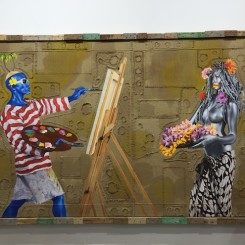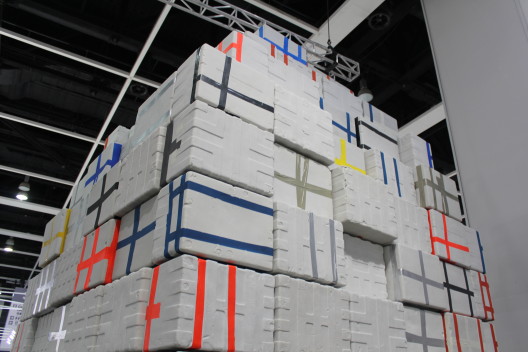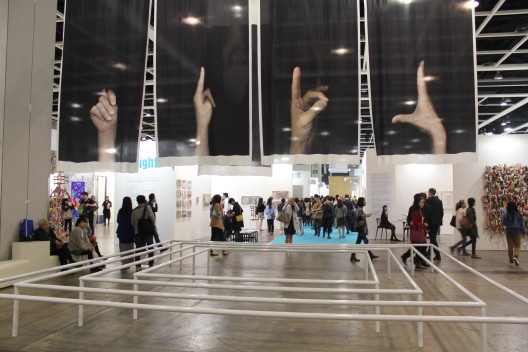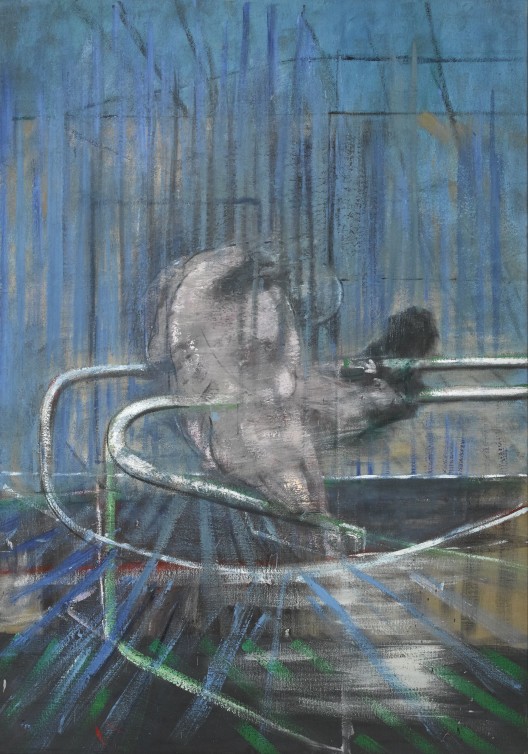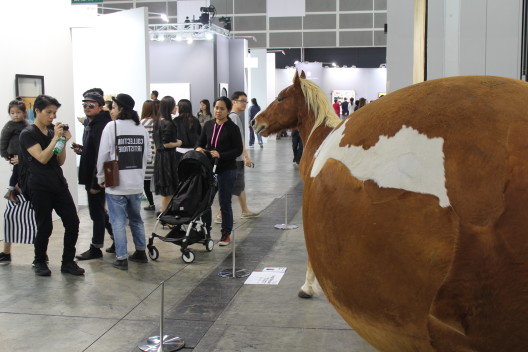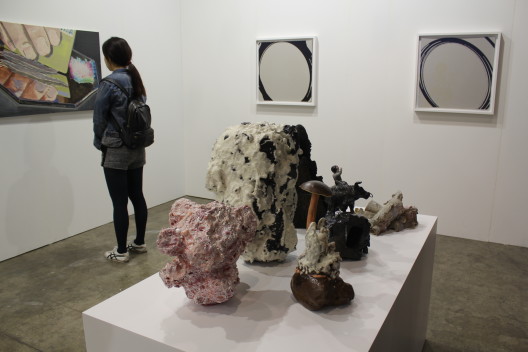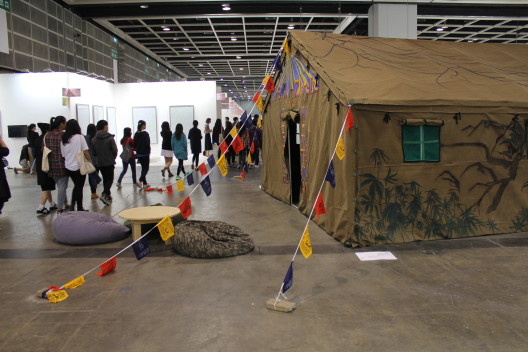Art Basel is a show, not a fair. The distinction, albeit self-assumed, is critical. While art fairs primarily offer display, Art Basel offers connections and status, the twin fulcra of the art market. In China and East Asia only Art Basel, the Venice Biennale and documenta—also “shows”—are accorded a level of benchmark respect. Participation is a status-symbol, but also a measure of transparent achievement. In a country with at best a nascent museum sector which is largely private, a somewhat hidebound and blind(ed) cultural education system, and an often gagged and gormless art media, along with auctions, these “shows” provide a measure of intellectual and financial transparency. The importance of this role cannot be overstated.
The third year of Art Basel Hong Kong was a success— as predicted, as organized, as executed, as reported. Its attendance by collectors, curators and public grew. Its display was more refined, more subtle, and easier to navigate. A great deal of art was sold, from and to China, from the world over, to the world over (it is easy enough to google the variously reliable sales reports). This year, Art Basel’s job was made easier by the presence of the first genuine satellite fair, Art Central, which offered a contrast of styles and audiences but was nevertheless highly professional and smartly presented. Expect to see more serious satellites—the Chinese art space race has just begun.
The quality of work was consistent, if a little conservative, but Art Basel is still training its baby. Nurture is at work. Before we see something on the scale and quality of Basel’s Art Unlimited, they will want everything else to be perfect. It was a pity that more galleries were not confident enough to put on strongly curated gesamtkunstwerk displays. In Basel, for instance, both neugerriemschneider and Gmurzynska are known for their curatorial panache. In Hong Kong, there were far fewer such displays, the notable exceptions including Almine Rech Gallery’s Aaron Curry display and Stuart Shave / Modern Art’s booth. While many works pandered to local tastes—actual, assumed, perceived and projected—there was still room for intellectual and aesthetic statements. Here the standout show was easily Nina Canell’s light-as-air observations on invisible forces at Dublin’s Mother’s Tankstation.
Timing created a few tensions. The show was moved from May to March, but the constellation of dates allowed by the convention center is not yet perfect for Art Basel’s requirements. No doubt they will be in the future. The VIP Private View began mid-afternoon—a little late for some galleries, notably those on the marginally less well-attended 3rd Floor, particularly on the two sides away from the entrance of the VIP lounge. This is also a function of the Hong Kong Convention Center’s somewhat idiosyncratic design, which forces audiences to have to leave one hall in order to go up or down elevators before entering the other.
It is clearer than ever that Art Basel Hong Kong is the only really important art show in Asia. Art Stage Singapore, while relevant for South East Asia and not without visual flair, cannot compete. Despite the intermediate state in which we found Art Basel Hong Kong this year, with content lagging slightly behind presentation, its position in Asia is as clear as its goals.
